There are numerous applications for feathers that have had barbs on one side folded opposite to the barbs on the other.
There are numerous applications for feathers that have had barbs on one side of the rachis (stem or shaft) folded opposite to the barbs on the other.
To name a few would include soft hackle flies, a body hackle and throat on a feather wing Salmon Fly, a palmered hackle on a Wooly Bugger, etc. The typical purpose of using a folded feather in a fly is to allow the barbs to sweep toward the hook bend, or in the case of a Sakasa Kebari (“reverse [hackle] fly”) to allow the barbs to sweep toward the hook eye.
There are numerous methods for folding feathers. Some techniques use scissor blades (cutting edge or back edge) to gently scrape across the rachis creasing the barbs down. Another, using fingers, creases barbs from both sides of the feather forming a “V” shape. My preference is to fold by hand via a method introduced to me in the early 1980’s by Bill Hunter.
The steps below assume that the tier is right handed
The steps below assume that the tier is right handed with intention of winding the feather in the conventional direction which would be over the top of the hook and back around underneath. The photos below are shot by Verne Lehmberg.
- Peel unneeded barbs from the base of the feather down toward the quill. Try not to break the rachis when performing this step since it will be used to hold the feather when folding.
- The feather should be “face side” to you with the tip to your right and the quill end to your left. Grasp the stripped portion of the rachis with hackle pliers slightly below the barbs you will fold. (You can fold without hackle pliers, but I have found they serve as a useful “third hand”.) Control the hackle pliers with your left 4th and 5th fingers, and grasp the feather tip with your right thumb and index finger.
- With the feather held slightly taut and beginning with barbs next to the stripped end, push a small section (start with a ½” or less) of upper barbs over and away from you. The feather will begin to twist. To control this place your left thumb against the face of the feather at the rachis as your index finger pushes the upper barbs over and down behind the rachis.
- While firmly pinching the barbs between your left thumb and index finger, pull both the hackle pliers (controlled by your left 4th and 5th fingers) and the feather tip (controlled by your right hand) up forming a flattened “U” in the rachis.
- Now slide the “U” firmly up the side of your left index finger while releasing just enough pressure with your left thumb and index finger to allow slippage of the barbs. This will crease the feather’s upper barbs straight down against the back edge of the rachis. Do not pull the barbs back toward the quill. When properly folded the barbs will extend 90 degrees to the rachis, bottom barbs in front, top barbs now folded and behind. If the barbs do not hold the fold, apply more pressure as you pull the “U” up against your left index. Care should be taken not to apply so much pressure that the barbs are peeled off of the rachis. When properly folded the barbs will be creased in a way that can be felt when you run a finger along the folded edge of the feather. It will feel coarse, rather like running your finger against the edge of a tiny zipper.
- Repeat the process by folding in sections progressively toward the feather tip until you have folded the amount required for your fly.
- The feather is then tied in by the tip and wound. When winding, with more pressure applied the barbs will extend more perpendicularly from the hook shank. With less pressure they will sweep more parallel to the shank.
Hand picked for this article
- Log in to post comments

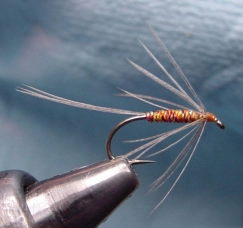







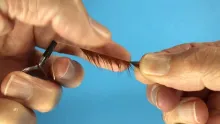
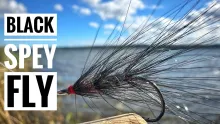
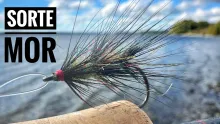
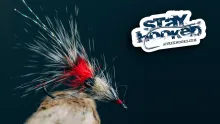

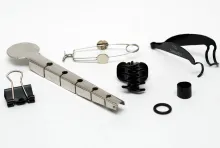
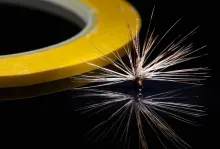

I've seen this way on YouTube
I have seen this way and it looks easy enough but I am sure you have to practice a few times. I prefer to tie the feather on the hook then fold the hackle while wrapping. It seems to me to take less time. I suppose if you knew how many flies you would be tying it could all be done at once and thereby increasing number of flies tied. Thanks for being on facebook because it is easier for some of us to use to find articles. All the best to you and yours. Sean